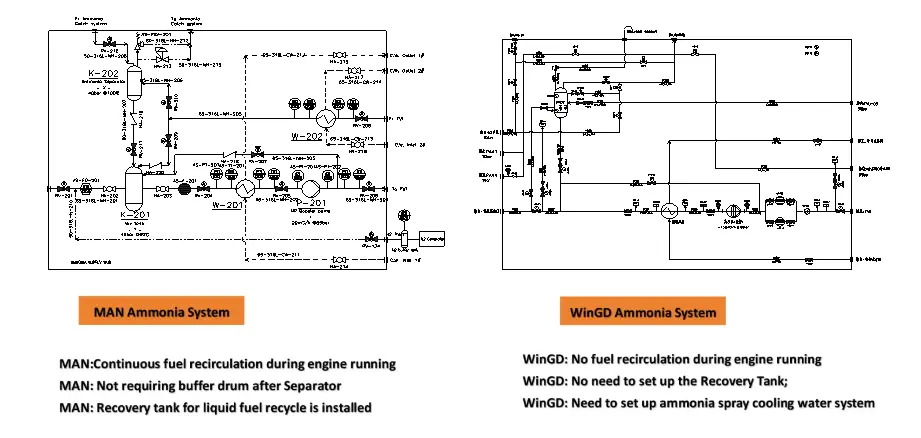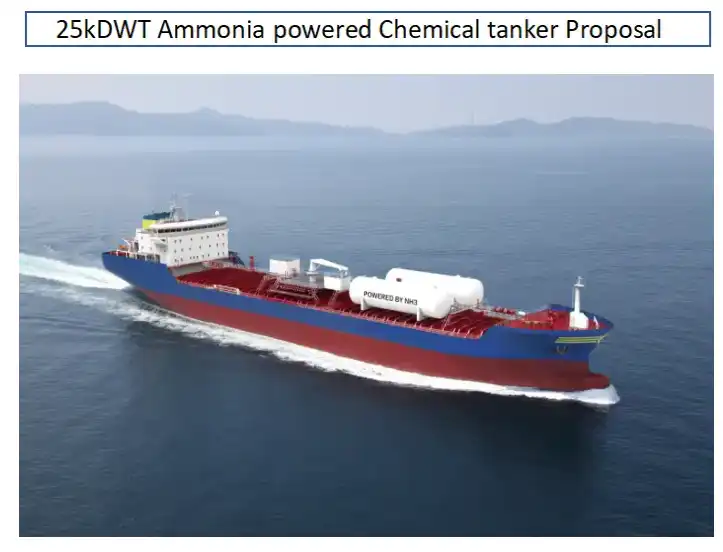AFSS
Overview of the AFSS
The Ammonia Fuel System consists of several essential components, including the filling and storage system, the Ammonia Fuel Supply System (AFSS), the Fuel Value Unit (FVU), the vent system, the Ammonia Release Management System (ARMS), the ventilation system, the inert gas system, the internal engine ammonia fuel system, and the safety system. Notably, there are distinct differences between the systems of MAN and WinGD.

Why Choose Us?
1. Industry-Leading Expertise – With vast experience in designing and constructing dual-fuel vessels, liquefied gas carriers, chemical tankers, and associated systems, our team is unmatched in expertise.
2. Comprehensive Solutions – We provide integrated services covering Methanol Fuel Supply Systems (MFSS), LNG Fuel Supply Systems (FGSS), Ammonia Fuel Supply Systems (AFSS), and LPG Cargo Handling Systems (CHS).
3. Proven Track Record – Having successfully delivered 19 ship sets of clean fuel supply and cargo handling systems, we have established a reputation for reliability and performance.
4. Innovative AFSS Development – By utilizing our ammonia carrier construction expertise and LPG retrofitting capabilities, we independently design ammonia fuel supply systems and actively engage in zero-carbon laboratory projects.
5. Full Lifecycle Support – From design and manufacturing to installation, our team ensures comprehensive support throughout the entire lifecycle, alongside continuous construction of multiple units and extensive after-sales service.
Product Parameters

Product Details
1. Safety and Efficiency – The system ensures the safe and efficient bunkering and storage of ammonia, complying with strict regulations for handling low-flashpoint fuels. It is specifically designed to meet IMO regulations and industry standards for ammonia as a marine fuel.
2. Flow Control and Safety Features – With the ability to precisely control ammonia flow, the system ensures safe operations. It is equipped with advanced safety features such as leak detection, emergency shutdown systems, and integration with inert gas systems.
3. Environmental Protection – The system prevents environmental risks by capturing and treating ammonia vapor. It is designed with thermal oxidation or re-liquefaction systems to ensure the safe handling of ammonia, particularly within low-pressure storage tanks.
4. Ventilation and Risk Mitigation – This system ensures proper ventilation in both above-deck and enclosed areas, minimizing explosion risks by integrating inert gas systems to safeguard hazardous areas.
5. Pressure Maintenance – To maintain pressure within safe limits for low-pressure storage tanks, the system incorporates re-liquefaction or sub-cooling units. Alternatively, thermal oxidation systems can be used to handle excess ammonia vapor effectively.

Installation Process
1. Vessel Design Confirmation – Start by confirming the vessel design drawings and interface requirements for the system. Complete any necessary technical clarifications at this stage.
2. Preparation for Installation – Assemble all the required installation tools, equipment, and safety protection measures.
3. Transportation of Components – Transport the prefabricated fuel supply system module to the installation site, using lifting equipment to position it accurately in the designated area.
4. Module Fixation – Secure the base of the module to the ship's structure, ensuring stability and alignment according to design specifications.
5. Connecting Systems – Connect the transfer pipelines, auxiliary system piping, and control cables, ensuring proper sealing performance and electrical system integrity.
6. Debugging Procedures – Perform individual and integrated debugging of the supply system to verify the operational performance of subsystems, including bunkering, supply, and control safety functions.
For more product information about AFSS, please leave a message below.

